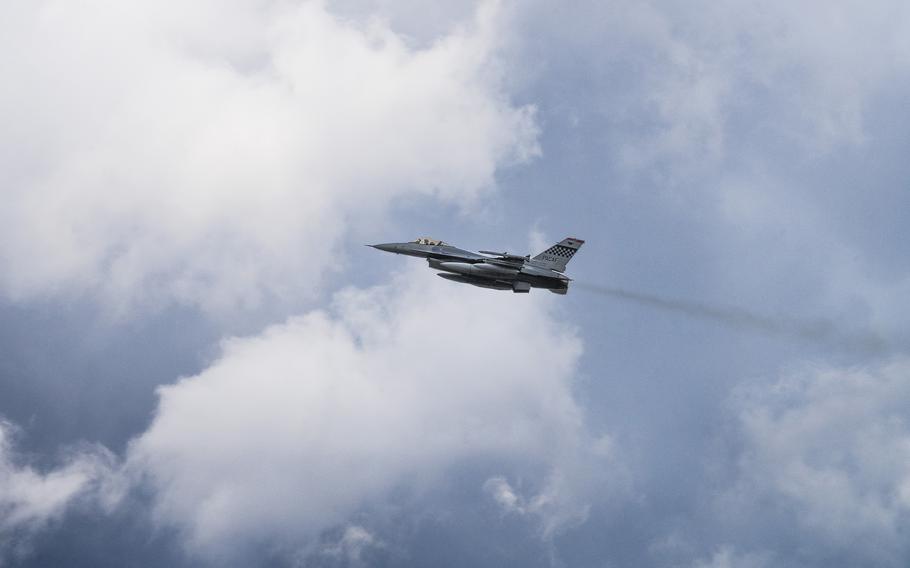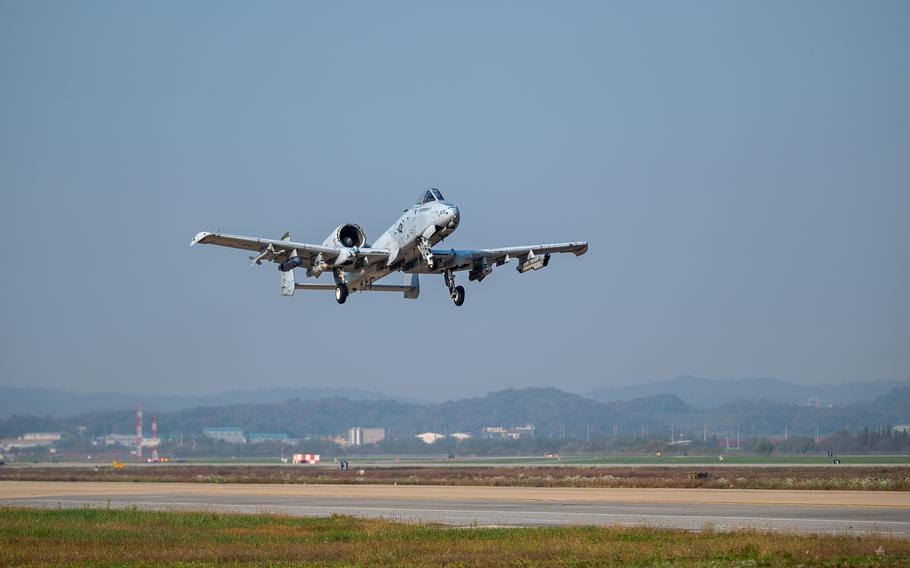Air Force
South Korean mayor seeks solution to aircraft noise near US bases
Stars and Stripes November 17, 2023

An F‐16 Fighting Falcon assigned to the 36th Fighter Squadron takes off at Osan Air Base, South Korea, Nov. 6, 2023. (Trevor Gordnier/U.S. Air Force)
CAMP HUMPHREYS, South Korea — The mayor of a South Korean city where two major U.S. military bases are located called for the loosening of building codes to alleviate aircraft noise pollution.
“Aircraft noise is an impossibly difficult problem” for the residents of older, smaller buildings, Mayor Jung Jang-seon of Pyeongtaek city said at a televised news conference Thursday. He used the time to urge the U.S. and South Korean militaries to raise the height limits for buildings in the area.
Particularly in the city’s old town, in the vicinity of the U.S. military bases, residents have been living with physical and mental problems brought on by aircraft noise, Jung said. Their property is also disadvantaged because of building height restrictions, he said.

An A-10C Thunderbolt II takes off from an alternate landing strip at Osan Air Base, South Korea, Oct. 30, 2023. (Thomas Sjoberg/U.S. Air Force)
Pyeongtaek is home to Osan Air Base and Camp Humphreys, roughly 30 and 40 miles south of Seoul, respectively. Camp Humphreys serves as headquarters for U.S. Forces Korea, Combined Forces Command, U.N. Command and the U.S. Eighth Army; Osan is home to the U.S. 7th Air Force and the headquarters of the South Korean air force Operations Command.
The military bases played “pivotal roles” in South Korea’s defense, Jung said. However, airspace safety zones that limit building heights span 70 square miles, or 38% of the city, draw complaints from residents living in smaller buildings.
The airspace safety zone regulations limit buildings to 15 stories, according to a report from Pyeongtaek city.
The proposed changes would primarily affect new buildings or existing owners who are interested in upscaling, a Pyeongtaek city official told Stars and Stripes by phone Friday. South Korean officials regularly speak to the media on a customary condition of anonymity.
Newer, high-rise buildings in South Korea are typically outfitted with soundproofing material that minimize noise from aircraft and residents are monetarily compensated by real estate developers and building owners for the noise pollution, the city official said.
“Our city appeals to [USFK and the South Korean air force] to make the decision to loosen height restrictions from the minimum range,” Jung said.
U.S. Eighth Army spokesman Lt. Col. Juan Martinez said the command has “a great working relationship” with the city. “We will continue to work closely with Pyeongtaek leadership to address questions and concerns, while ensuring decisions do not have impacts on operations and combat readiness,” he said by email Friday to Stars and Stripes.
Starting in 2004, Pyeongtaek has seen an influx of U.S. troops after the commands moved from Yongsan Garrison in Seoul. The nearly $11 billion relocation project was meant to consolidate U.S. forces in South Korea and return land used by the military since the 1950-53 Korean War back to Seoul’s government.
The Combined Forces Command was the last of the major commands to move to Humphreys in November 2022.